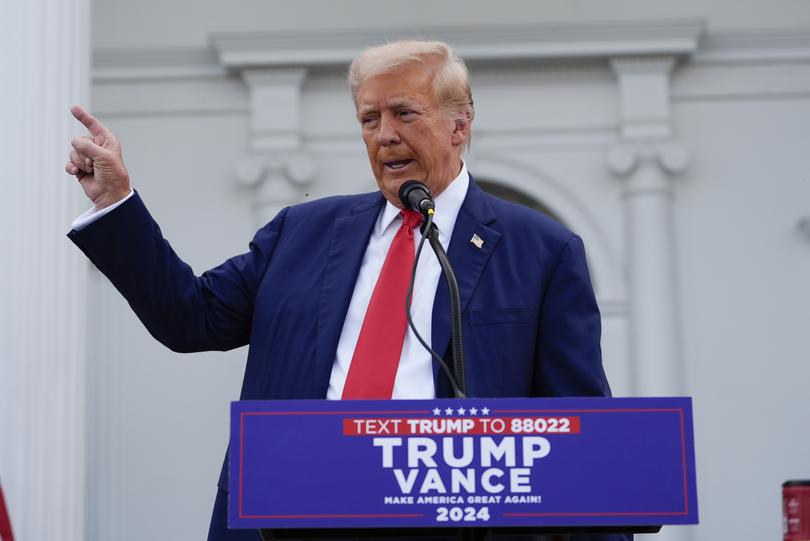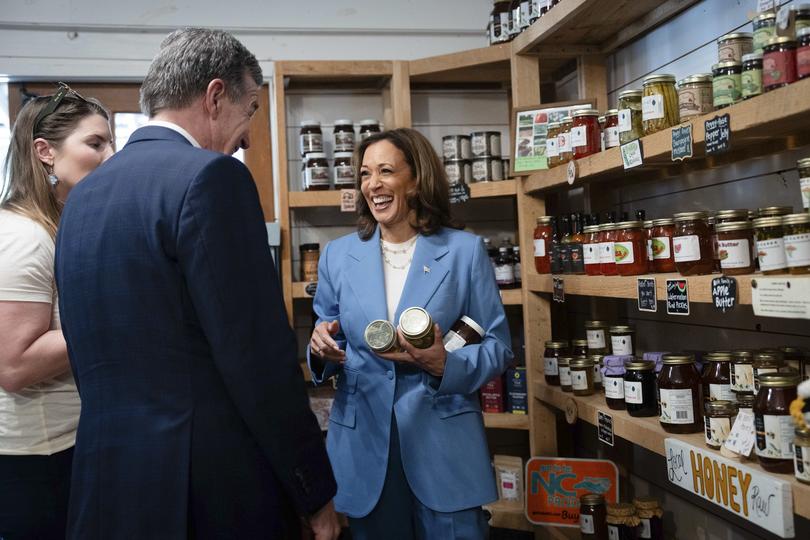THE NEW YORK TIMES: Harris and Trump offer a clear contrast on the economy
Vice President Kamala Harris and former President Donald Trump flew to North Carolina this week to deliver what were billed as major speeches on the economy.
Neither laid out a comprehensive policy plan — not Harris in her half-hour focus on housing, groceries and prescription drugs, nor Trump in 80 minutes of sprinkling various proposals among musings about dangerous immigrants.
But in their own ways, both candidates sent voters clear and important messages about their economic visions.
Sign up to The Nightly's newsletters.
Get the first look at the digital newspaper, curated daily stories and breaking headlines delivered to your inbox.
By continuing you agree to our Terms and Privacy Policy.Each embraced a vision of a powerful federal government, using its muscle to intervene in markets in pursuit of a stronger and more prosperous economy.
They just disagreed, almost entirely, on when and how that power should be used.

In Raleigh on Friday, Harris began to put her own stamp on the brand of progressive economics that has come to dominate Democratic politics over the past decade.
That economic thinking embraces the idea that the federal government must act aggressively to foster competition and correct distortions in private markets.
The approach seeks large tax increases on corporations and high earners, to fund assistance for low-income and middle-class workers who are struggling to build wealth for themselves and their children.
At the same time, it provides big tax breaks to companies engaged in what Harris and other progressives see as delivering great economic benefit — like manufacturing technologies needed to fight global warming, or building affordable housing.
That philosophy animated the policy agenda that Harris unveiled Friday. She pledged to send up to $25,000 in down-payment assistance to every first-time homebuyer over four years, while directing $40 billion to construction companies that build starter homes.
She said she would permanently reinstate an expanded child tax credit that President Joe Biden temporarily established with his 2021 stimulus law, while offering even more assistance to parents of newborns.
She called for a federal ban on corporate price gouging on groceries and for new federal enforcement tools to punish companies that unfairly push up food prices.
“My plan will include new penalties for opportunistic companies that exploit crises and break the rules,” she said, adding: “We will help the food industry become more competitive, because I believe competition is the lifeblood of our economy.”
Questions remain over the rest of Harris’ agenda, including which tax increases she would favor to offset those tax cuts and spending programs.
The nonpartisan Committee for a Responsible Federal Budget, which is focused on deficit reduction, estimated Friday that the plans she unveiled would raise the federal deficit by $1.7 trillion over the next decade, if not paid for.
But the main thrust of Harris’ vision is clear: a mixture of government intervention and government assistance, all meant to help Americans climb their way into the middle class.
As Gene Sperling, a former economic aide to three Democratic presidents who is a senior economic adviser to Harris, put it: “Her focus on an opportunity economy and her stress on homeownership show she is focused like a laser on both lowering costs to help families make ends meet and being able to get ahead by owning a home or starting a small business.”
Trump’s pitch is simpler: He says that he made America rich the first time he was in the White House, and that he would do it again. He also blames Harris and Biden for a surge in inflation under their administration.
“I gave Harris and Biden an economic miracle, and they quickly turned it into an economic nightmare,” he said in Asheville on Wednesday, omitting the job and income losses of the 2020 pandemic recession on his watch.

Like Harris, though, Trump offered a string of pledges on how he would wield government power to intervene in markets and help consumers. He said he would direct his Cabinet to somehow bring down the cost of car insurance in the first 100 days of his presidency, or possibly even the first week. He said he would cut energy prices in half.
He said he would deport millions of immigrants to bring housing prices down.
Trump also ratcheted up a promise to impose new taxes on imported goods — from every country the United States trades with — in a bid to force more companies to make products in America.
Previously, Trump said he would tax imports at a 10 per cent rate; in Asheville, he said the rate could be as high as 20 per cent. Those tariffs are paid by US importers, not foreign countries. Economic research suggests they would, to some degree, raise prices and serve as a tax on consumers.
This, too, is a clear vision of federal power reshaping the economy. It is a foundation of Trump’s economic agenda and, in many cases, a break from the conservative economic orthodoxy that long dominated the Republican Party.
But Trump has not abandoned all of that tradition. He pledged to continue cutting taxes, including extending cuts for individuals that he signed in a 2017 tax overhaul and eliminating federal income taxes on Social Security benefits and tip income.
He also promised to roll back federal regulations of business, including environmental regulations and restrictions on oil drilling on some public lands.
An analysis based on reports from the Committee for a Responsible Federal Budget suggests that Trump’s tax cuts could add $7 trillion to the deficit over a decade, only some of which would be offset by tariffs or a repeal of tax breaks signed by Biden.
Economists warn that higher deficits could stoke more inflation. Trump aides say his agenda will lower prices.
“If you were to cut taxes, deregulate the economy, produce more energy — all of those policies are deflationary, not inflationary,” Stephen Moore, a co-founder of the conservative Committee to Unleash Prosperity and a policy adviser to Trump, told reporters on Friday.

In North Carolina, Trump and Harris each sought to cast the other’s philosophy of federal power as a threat to the economy and working families.
Trump warned that Harris would cause a 1929-style stock crash if elected. Harris said Trump’s tariffs would amount to “a Trump tax on gas, a Trump tax on food, a Trump tax on clothing, a Trump tax on over-the-counter medication.”
There was little overlap in the speeches. Harris pledged a small amount of deregulation, saying she would cut “red tape” to speed housing construction. Both candidates spoke highly of Medicare.
Harris had said in recent days that, like Trump, she supports exempting some tipped income from federal taxes. In Raleigh, she did not mention that particular source of agreement.
This article originally appeared in The New York Times.
© 2024 The New York Times Company
Originally published on The New York Times
